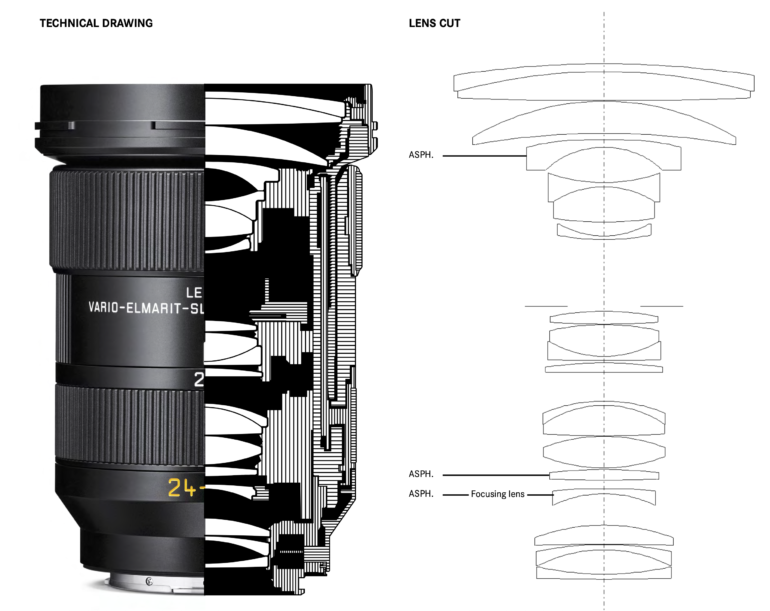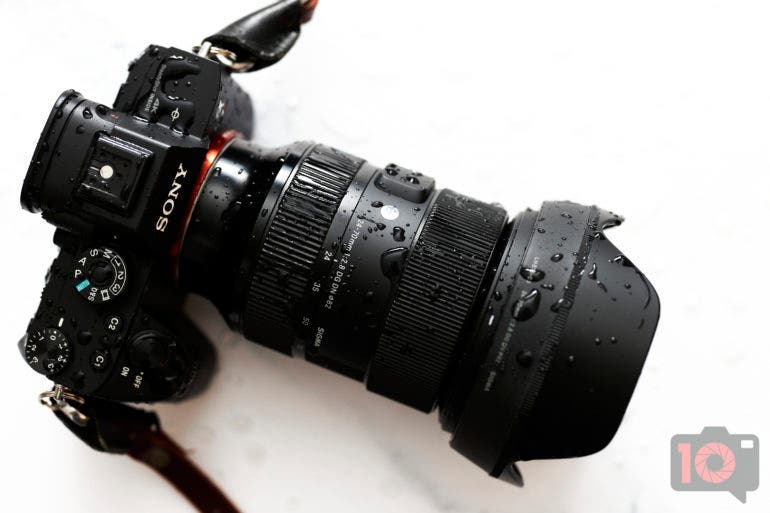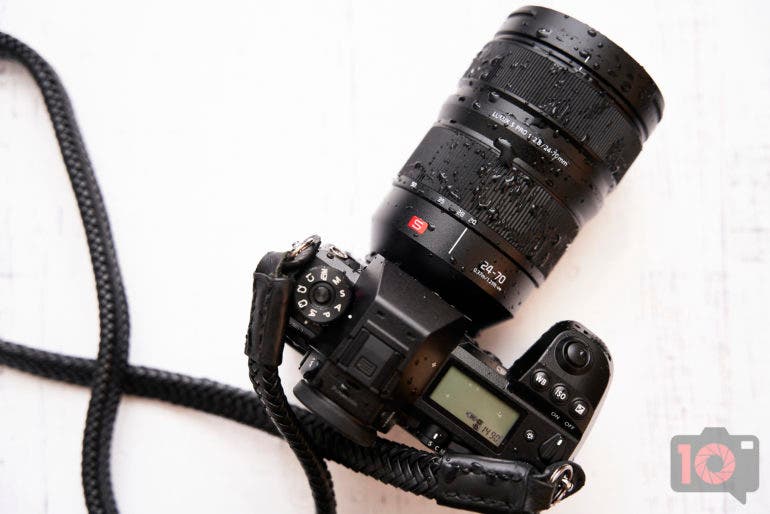The Leica 24-70mm F2.8 ASPH SL Addresses a Big Concern
We’re told that the Leica 24-70mm f2.8 ASPH SL will even say “Made in Japan.”
I guess it was inevitable that Leica would use Sigma lenses to boost their lens lineup. And that’s sort of what’s happening with the Leica 24-70mm f2.8 ASPH SL. This lens is for the Leica L mount. It uses Sigma optics and rehouses them in a more rugged metal body. Sigma tends to use something they call carbon-composite. It makes their lenses lighter, even though their Art lineup is still pretty heavy. With this Leica, we’re told it’s still under 2lbs. That’s a bit reassuring, considering that many of Leica’s L mount lenses require you to lift weights. But, when you realize the image quality, internal construction, and build quality, it becomes a bit more understandable.
Be sure to also check out our L Mount lens guide. We’ve reviewed most lenses for the format.
Leica 24-70mm f2.8 ASPH SL Tech Specs

Essentially the Leica 24-70mm f2.8 ASPH SL is the Sigma 24-70mm f2.8 DG DN Art internally. You can read our review of the Sigma here. Externally, the Leica uses a metal body with rubberized rings.
- 19 elements in 15 groups
- There is a single lens element that moves to get focus.
- 3 aspherical elements
- 11 aperture blades
- Metal body with weather sealing. This is probably the biggest thing. Leica has IP-rated their cameras, and if Leica rehoused this lens, we’re confident that the build quality will be that much higher.
- 82mm filter thread
- 123mm long vs. the Sigma at 122.9mm
- 88mm in diameter, where the Sigma is 87.8mm in diameter
- 906 grams vs. the Sigma at 835 grams. The Leica is just under 2lbs.
- $2,795 compared to Sigma, which is $1,099. And the Sigma is going for an even lower price right now.
Why Get the Sigma?

I’d expect many people to go for the Sigma lens. I own it for L mount. With firmware 2.0 on the Leica SL2s, it performs admirably. The Sigma is also lighter and more affordable. If you use it on Sony E mount, you may run into bigger issues. Sigma’s autofocus isn’t historically the best. You may be better off reaching for Sony or Tamron instead if you’re using E mount. But we’re talking about L mount here. The Leica 24-70mm f2.8 ASPH SL is the third 24-70mm f2.8 lens for the system.
By all means, the Sigma is a solid lens for L mount now. In fact, that’s where it’s going to shine the most. I haven’t tested it against the Leica yet, but I just tested it against the Panasonic. The Panasonic is noticeably faster. This was shocking; I thought I’d seen the true potential of L mount, but I haven’t.
Conclusion so far: It’s affordable, but we have to put all the lenses side by side.
Why Get the Leica?
The Leica is the most expensive. It’s roughly the same size as the Sigma, and it’s a bit heavier. From what I can see so far, you’re paying for the durability. But Leica might have done more to the lens. It’s using Sigma’s optics, but it could potentially focus faster on Leica cameras than Sigma lenses do. Durability and longevity are a huge concern for us millennials and zennials buying cameras. We can’t just go by a rep’s word that a lens or camera will be fine in the rain when a warranty won’t cover it.
Sure, you’re paying twice the Sigma price, but when you look at the Panasonic lens, it starts to make more sense. The Leica 24-70mm f2.8 ASPH SL, in some ways, seems to be the middle ground.
Conclusion so far: The build quality, but we have to put all the lenses side by side.
Why Get the Panasonic?

The Panasonic 24-70mm f2.8 Lumix Pro is $2,197.99. This is also a lens that we reviewed, and it has improved with autofocus updates to L mount cameras. And as we stated earlier, it’s also noticeably faster than the Sigma 24-70mm f2.8 DG DN Art. As of writing this, we haven’t tested it against the Leica 24-70mm f2.8 ASPH SL. Sigma seems like a very affordable budget option so far. Panasonic’s lens weighs 2.06 lbs, so Leica and Sigma are both lighter. The Panasonic is 90.9mm in diameter and 140mm long – longer and wider than the Sigma and the Leica. Panasonic also IP rates their cameras, so the lenses have to be sealed just as well.
Conclusion so far: The autofocus speed, but we have to put all the lenses side by side.